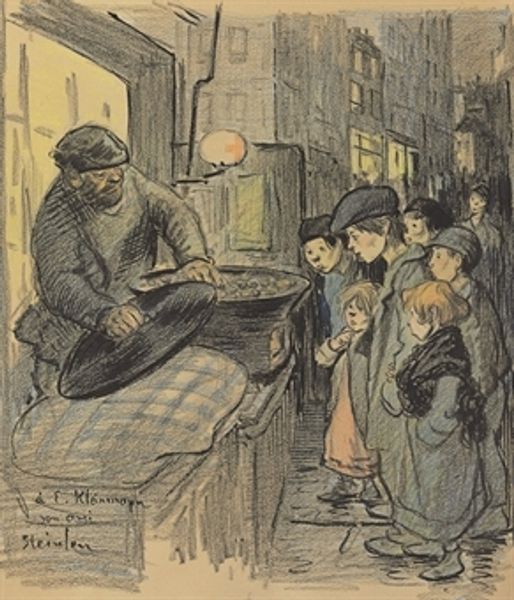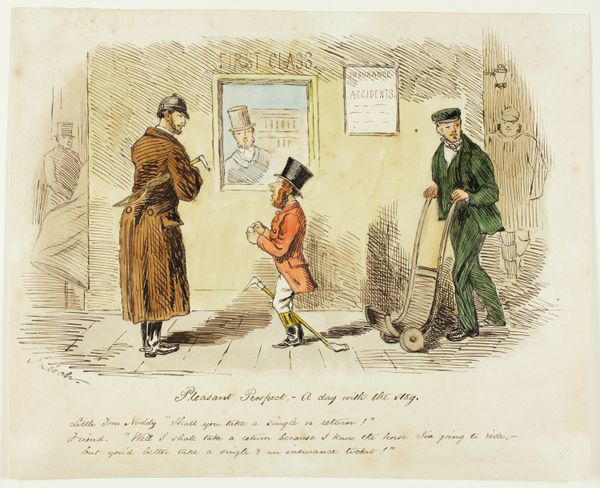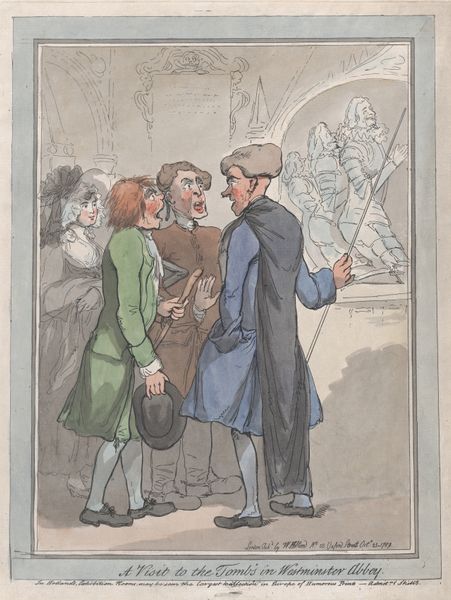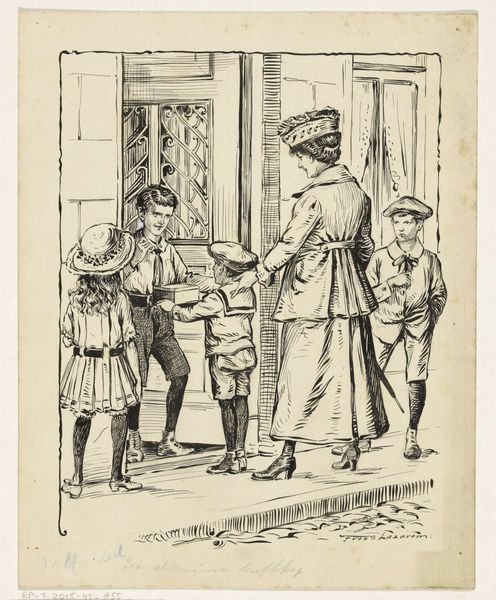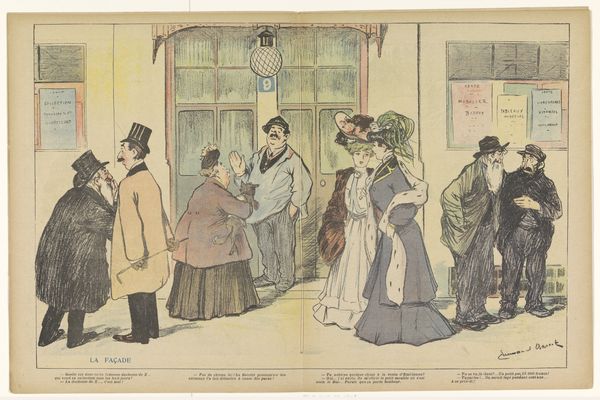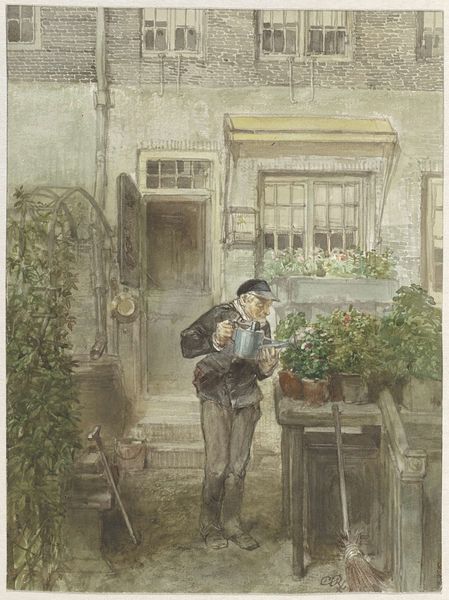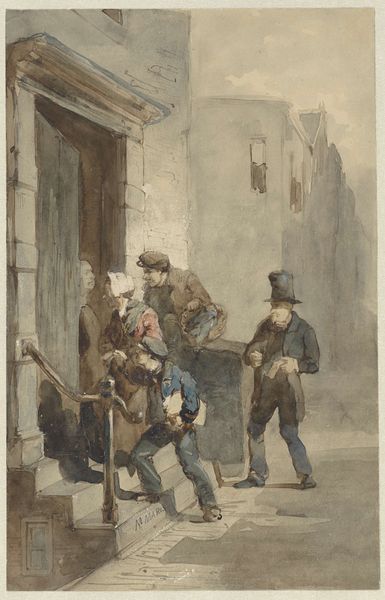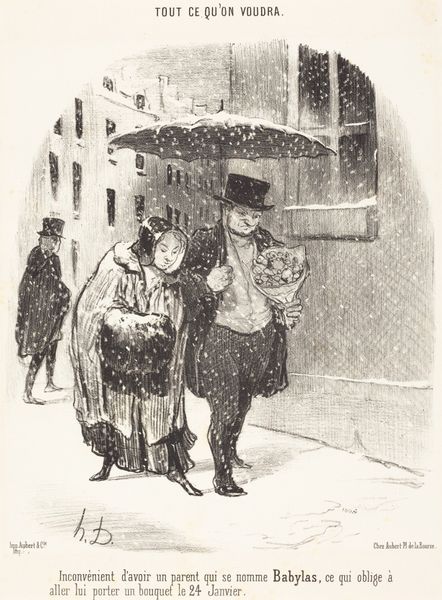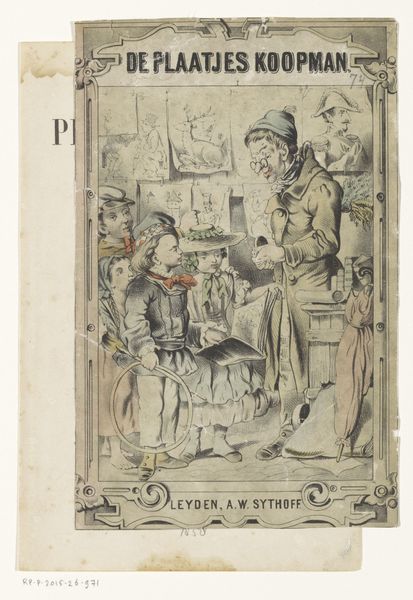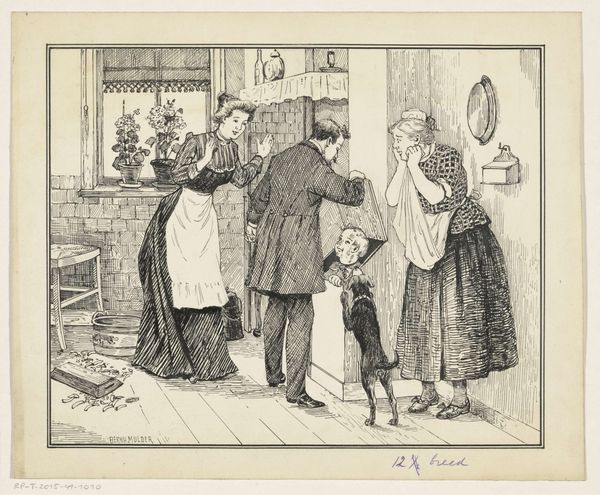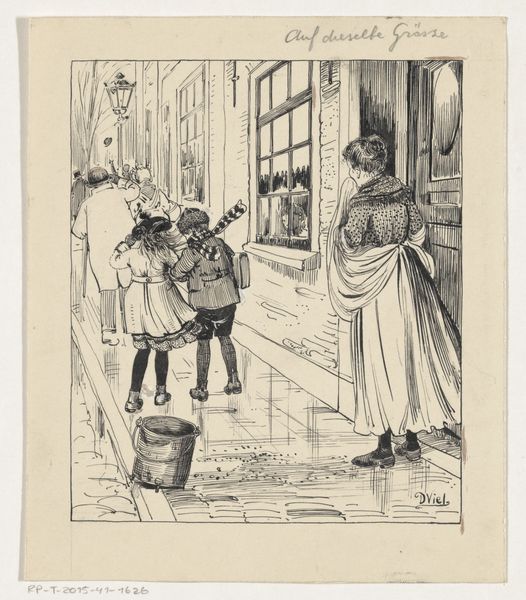
Man laat twee kinderen speelgoed zien op de stoep van een prenthandel c. 1875 - 1925
0:00
0:00
Dimensions: height 302 mm, width 222 mm
Copyright: Rijks Museum: Open Domain
Curator: I'm captivated by this watercolour illustration by Pedro de Weyer, depicting a man showing toys to two children outside a print shop, dating somewhere between 1875 and 1925. Editor: There's a kind of grey melancholia that washes over everything, don’t you think? Even the children, though ostensibly interested in the toys, seem a bit subdued. Look at the subdued palette! You feel the materiality of London fog seeping into the very paper. Curator: Indeed, but let’s also look at what's happening: consumer culture in plain sight, a tableau of urban commerce. Here’s a man with trinkets—potentially factory-made—offering joy to these children. The labour behind each toy is absent, lost in the exchange. And these children look affluent; one carries a doll and the other, a dog. It's about class and access, and the staged commodification of joy, wouldn’t you say? Editor: Absolutely. And I'd also consider the street as a stage—De Weyer capturing an utterly spontaneous performance. Look how effortlessly he balances the shop's rigid structure with the figures' dynamism. I can almost hear the seller's spiel and children’s laughter muffled by the city sound! Curator: Think of the watercolor itself—pigments delicately suspended in water, laid on paper. What was available during that time? Did he grind them himself, or did he buy them pre-mixed? How did those materials—or lack thereof—affect the way people perceived art then and what messages can be conveyed to viewers today? Editor: A fair point; still, you can feel De Weyer’s sensitive approach here. Notice the figures. With just a few strokes of his brush, the face of each tells their own unique, silent story—a skill beyond mere commercialism! Curator: I can't help but feel both invited and repelled—lured in by the gentle colour, then cast back by the social complexities unfolding right before the shop's entrance. Editor: Yes. As ever, a bittersweet reminder to question what we see. What stories are sold to us, what joys do they represent, and most of all, how much did they really cost?
Comments
No comments
Be the first to comment and join the conversation on the ultimate creative platform.
